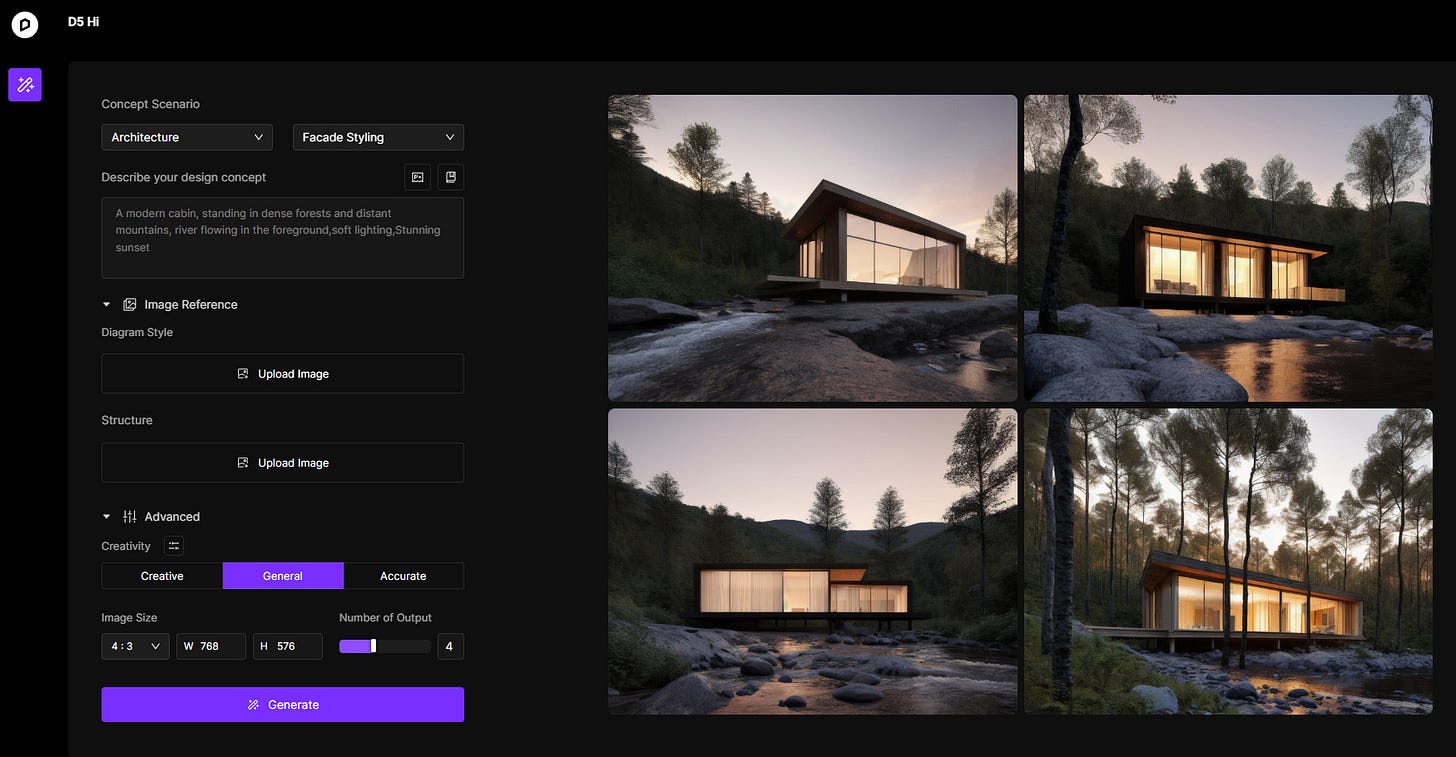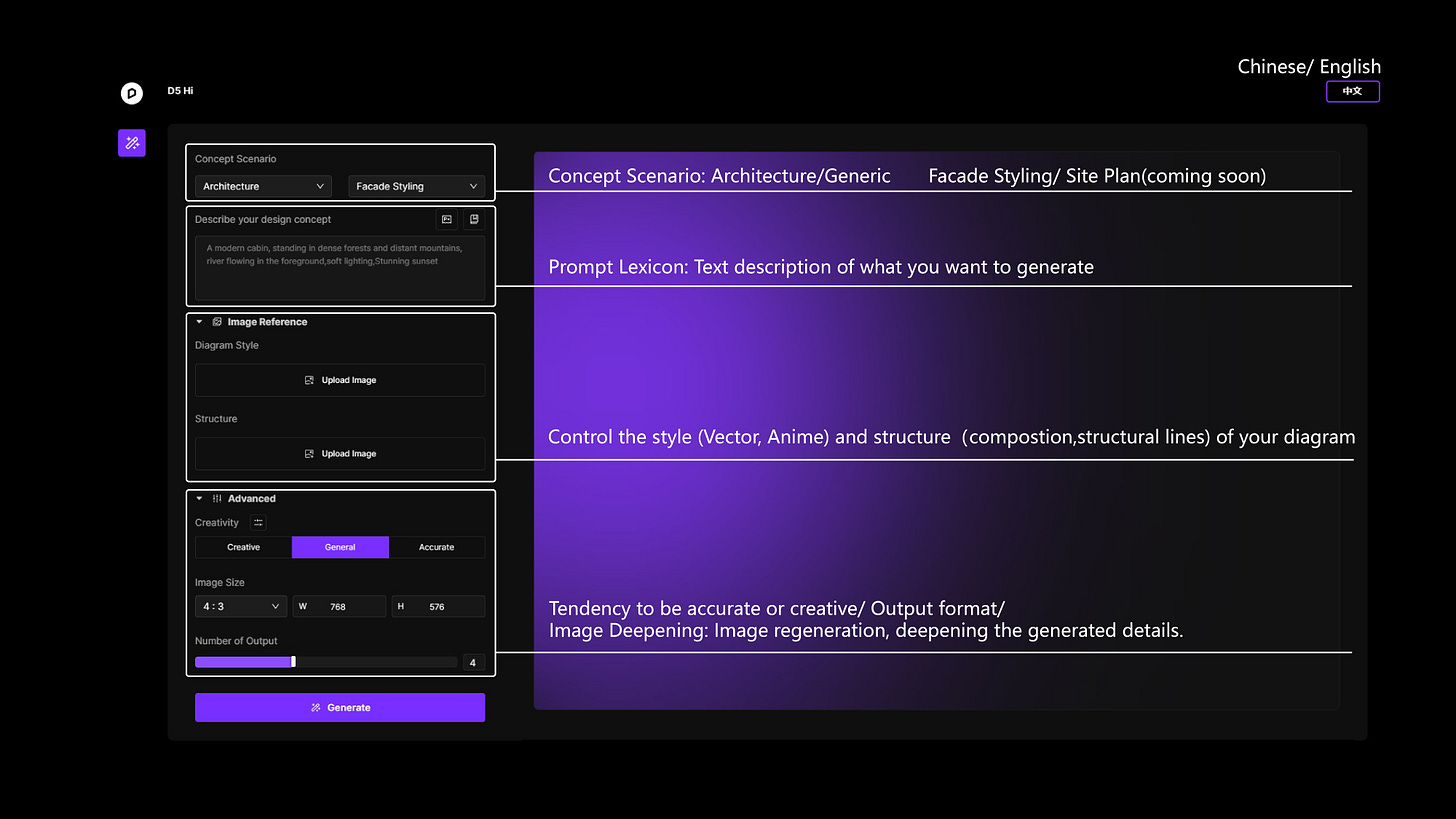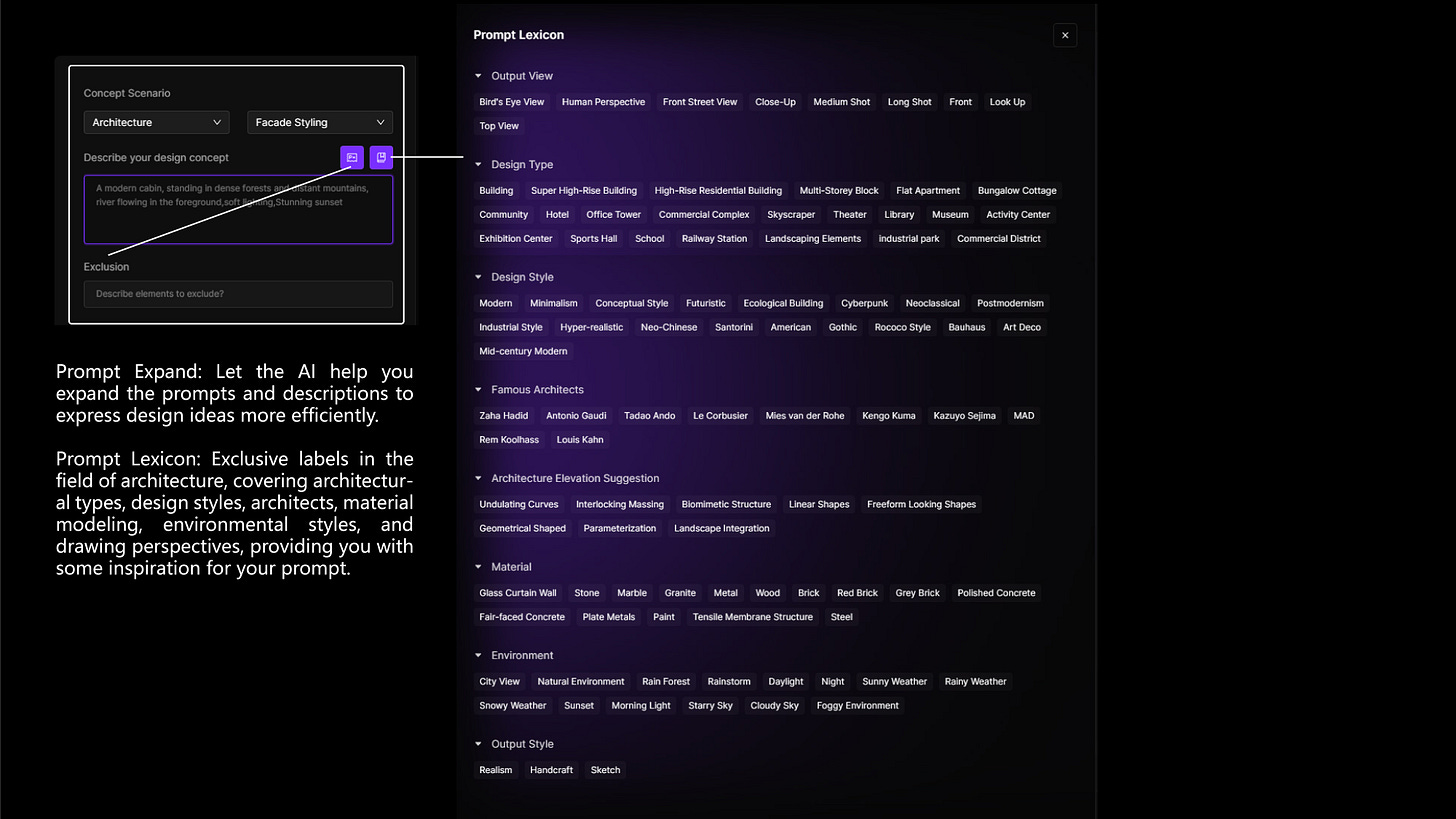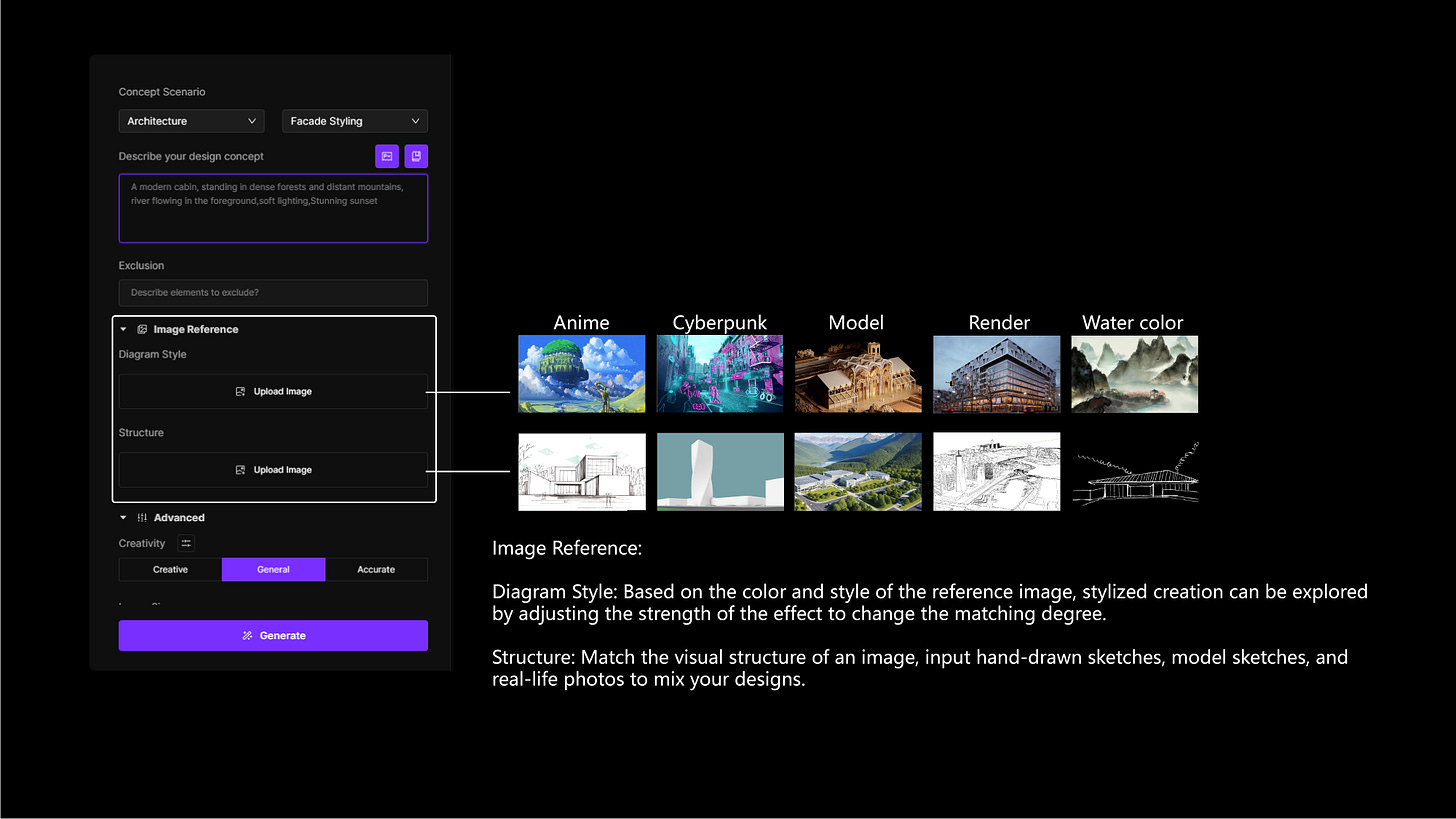Hey friends,
First of all, apologies for missing the last two weeks as I was on holiday and enjoying the Welsh countryside as well as visiting a good friend in Glasgow! Our car, however, broke and stopped working on the drive from Glasgow to London, and we had to leave it in the middle of nowhere and get back home through a lovely scenic bus ride, which felt like a successful rescue mission.
This week I am coming with some exciting news about the world of AI and architecture, where A major FREE render tool called “D5 Render," which I am sure many of you are familiar with, has released its FREE AI renderer! Isn’t that so awesome?
In this newsletter, I am going to cover all we know so far about this tool but leave talking about my hands-on experience later as I am patiently waiting on the waiting list to get access to it.
Now let’s get to it!
What is D5 Render?
So in a nutshell, D5 is a really good free alternative to all major architectural rendering software such as Lumion, Enscape, V-Ray etc. D5 has both a free version as well as a pro version where you can pay for a premium of $30 a month to access the full assets library and other features. I remember using D5 in my final Uni project and it was a huge help.
What is D5 Hi?
So D5 Hi is the AI tool that D5 has released recently, which was launched on their website and not their app. In order to access D5 Hi, you need to sign up for the waitlist, which should not take you more than a week or so to receive access.
Let’s go into some technicalities about how this tool actually works and is developed. You may have noticed that a lot of new websites are now offering exciting AI solutions for architecture and design, like Lookx.ai, mnml.ai, Lexica.art and many more. What is common between all of these tools is that none of them has actually invented a new AI tool, but they all use Stable Diffusion to generate AI images.
Since Stable Diffusion is an open-source AI model, everyone can use it to develop interfaces where users can interact with the software, which is the Stable Diffusion AI in the back-end.
D5 Hi is also not exempt from this, and they have implemented Stable Diffusion to build a good interface that architects can easily interact with, however, the value of D5 is that it’s free (at least for now).
D5 AI (D5 Hi) Features
So let’s now dive into the features of D5 Hi and go through what you can do with them.
Text to Image
The first and most important yet basic feature of D5 AI is its ability to turn text into images. However, D5 is acting smart here by adding a list of keywords that can enhance the text prompt for anyone who is usually not so good at writing prompts. Users can choose from a list of keywords, from different styles to views, design types, and more. After writing the prompt, you can ask for even more help by clicking on a little button called “Expand Prompt,” which provides the user with a few longer options of the same prompt, describing more details.
I would say no one should really rely on the expanded prompts since they take away so much of the designer’s agency that should go into the design.
Image to Render
The other feature that can be seen in D5 AI is its ability to turn images into renders, which is another feature that stable diffusion models have started to offer for a while now. The best use of this tool is when inputting raw, clay model renders from SketchUp, Rhino, or any other 3D tool, and turning them into a high-quality render with materials, shadows, and context.
Model Archive
The most interesting part of D5 AI is the ability to change the LoRA models. LoRA models are small, fine-tuned (customised) models that can be made by anyone to create a mini-model based on a specific style. For example, you can train a LoRA model for renders that have the same graphics as the image below, and then try to generate images that maintain the same style. This is also useful for generating a specific type of drawing, for example, section diagrams or plan drawings.
So basically, with D5’s model selection, you can choose from a range of existing and pre-trained models that are available in the programme although it would be great if one day they allowed users to upload and use their own customised models too.
Finally, D5’s AI tool can be a great help for beginners who are looking to work with a powerful tool while enjoying the free features that are available for them to use. D5 can be a great tool to use for architectural processes.
I hope you enjoyed this week’s newsletter, and I can’t wait to write to you next week!
Amir xx
❤️My Favourite Things
🍿YouTube - Behind The Diary - Steven Bartlett is definitely one of the most inspiring people that I follow on social media and YouTube. His Podcast, Diary of a CEO, has been a game-changer in how I look at business and entrepreneurship. His new channel, which is called Behind The Diary, is where he shares vlogs about the behind-the-scenes of his work, and there again, he has inspired me in many ways. I definitely recommend subscribing to his channel for those who are interested in entrepreneurship and business.
📍Things to do In London - London Open House Festival - It’s that time of year again when London opens its doors to hundreds of exciting buildings like 10 Downing Street, BT Tower, Trellick Tower, and more! Most tickets are already gone, and the rest are going fast so make sure that you get your own tickets to your top favourite buildings in the city!







